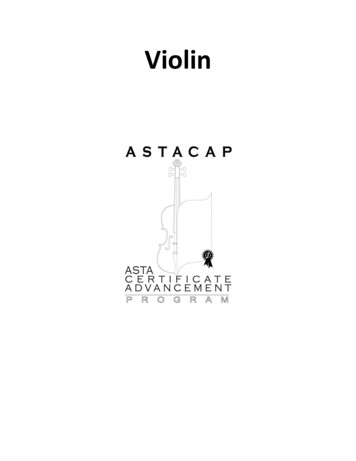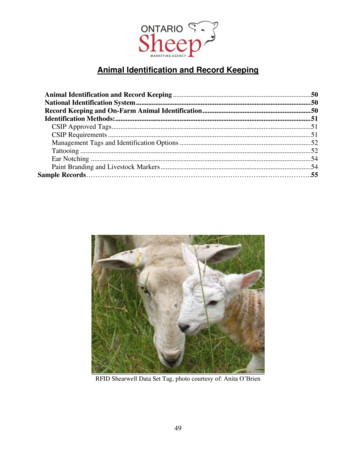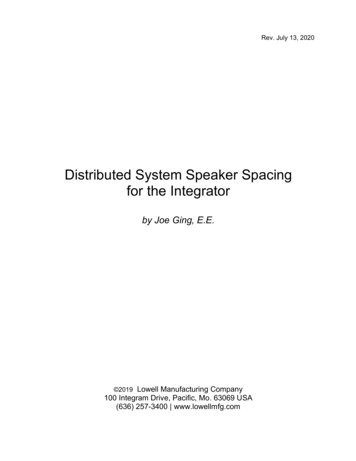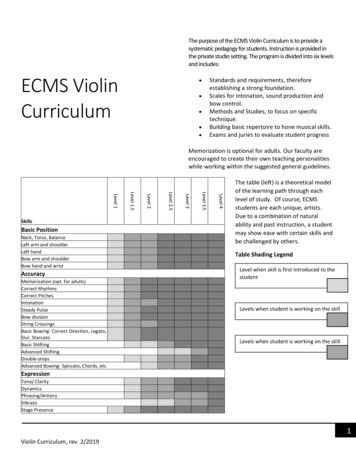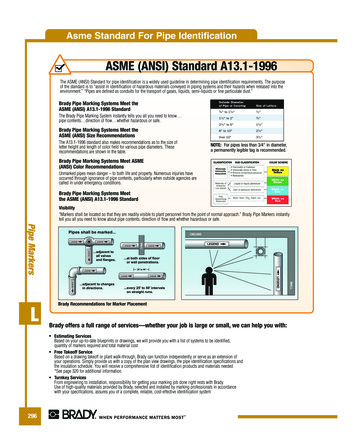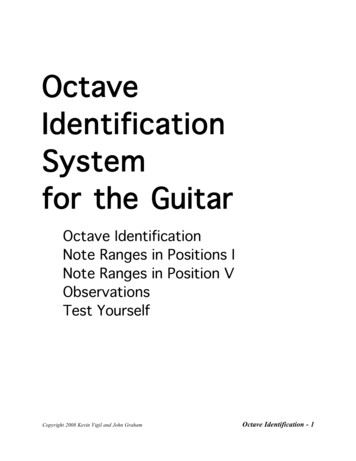
Transcription
OctaveIdentificationSystemfor the GuitarOctave IdentificationNote Ranges in Positions INote Ranges in Position VObservationsTest YourselfCopyright 2008 Kevin Vigil and John GrahamOctave Identification - 1
Octave Identification An octave is the distance between two notes that share the same letter name. Start on anyletter of the musical alphabet and count the number of notes until you reach the sameletter. They are eight notes apart (8 “oct”). The note range of the guitar is nearly four octaves. To minimize confusion, an octaveidentification system was introduced in Guitar 101.Octave 1Octave 2Octave 3Octave 4Copyright 2008 Kevin Vigil and John GrahamOctave Identification - 2
Note Range inPosition I A Position is a - four finger to fourfret relationship - that is named afterthe fret that the first finger is on. * Enharmonic Equivalents are twonotes with the same pitch butdifferent names. For example: F andG Copyright 2008 Kevin Vigil and John GrahamE1A1D1G2B2E3F1A 1B 1D 1E 1G 2A 2C2F3F 1G 1B1E2A2C 2D 2F 3G 3G1C1F2A 2B 2D2G3G 1A 1C 1D 1F 2G 2B2D 2E 3G 3A 3Octave Identification - 3
Note Range inPosition V An Extended Position allows foreither the first or fourth finger toextend by one fret temporarily toreach a particular note.Copyright 2008 Kevin Vigil and John GrahamVA1D1G2C2E3A3A 1B 1D 1E 1G 2A 2C 2D 2F3A 3B 3B1E2A2D2F 3G 3B3C1F2A 2B 2D 2E 3G3C3C 1D 1F 2G 2B2E3G 3A 3C 3D 3Octave Identification - 4
Full Range of the GuitarObservations There are multiple locations fornotes above G (A ). For example,A1 can be played in two locations,while E3 can be played in fivelocation. Unisons are notes that are the exactsame pitch. Notice that when youplay E3 anywhere on this chart, thepitch is the same (assuming yourguitar is in standard tuning). Knowing where to play the samepitch in more than one location isoften necessary. In this example, D2and B2 must be played on twodifferent strings. These two notescannot be played simultaneously onone string (@).VVIIE1A1D1G2 B 2E3F1A 1B 1D 1E 1G 2A 2C2F3F 1G 1B1E2A2C 2D 2F 3G 3G1 C 1F2A 2B 2D2G3G 1A 1C 1D 1F 2G 2B2D 2E 3G 3A 3A1D1G2 C 2 E3A3A 1B 1D 1E 1G 2A 2C 2D 2F3A 3B 3B1E2A2D2F 3G 3B3C1F2A 2B 2D 2E 3G3C3C 1D 1F 2G 2B2E3G 3A 3C 3D 3D1G2C2F3 A 3D3D 1E 1G 2A 2C 2D 2F 3G 3D 3E 4A2D2G3 B 3E4F2A 2B 2D 2E 3G 3A 3C3F4F 2G 2B2E3A3C 3D 3F 4G 4G2 C 2F3A 3B 3D3G4G 2A 2C 2D 2F 3G 3B3D 3E 4G 4A 4D2G3 C 3 E4A4D 2E 3G 3A 3C 3D 3F4A 4B 4E3A3D3F 4G 4B4XII E2 * *The technically correct clef for theguitar is a treble clef with thenumber “8” written below it. Thisrepresents that the guitar sounds anoctave lower. Many guitarists whoalso play piano are surprised whenthey play a Middle C on the guitarand it sounds an octave lower. Thisis because most published guitarmusic is written without the “8”below the staff.Copyright 2008 Kevin Vigil and John GrahamXVII A 2A 2B 2XIX B 2A 3B 3Octave Identification - 5
Octave Identification Test test yourselfPart 1:Write the note names with octave identification.Part 2:Write the requested notes on the staff.Copyright 2008 Kevin Vigil and John GrahamOctave Identification - 6
guitar is a treble clef with the number “8” written below it. This represents that the guitar sounds an octave lower. Many guitarists who also play piano are surprised when they play a Middle C on the guitar and it sounds an octave lower. This is because most published guitar
